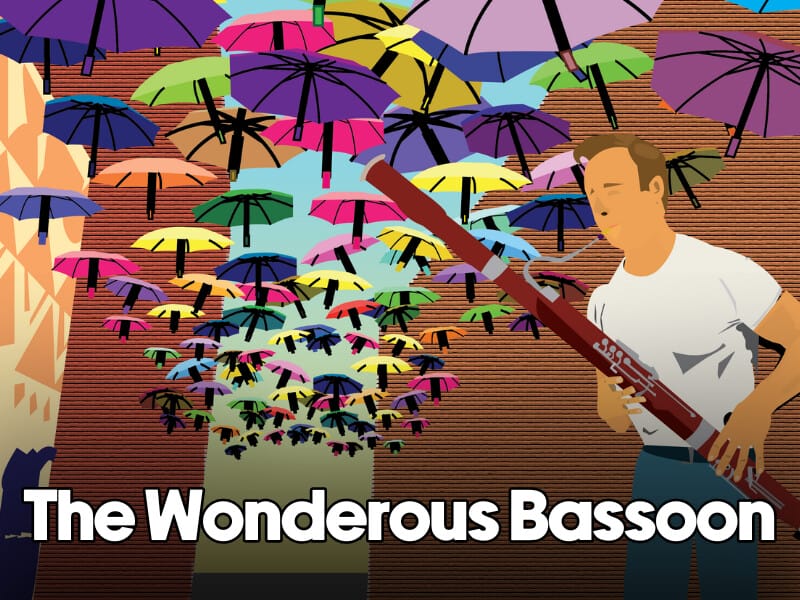Events

- This event has passed.

Redlands Symphony Orchestra performs Strum
- featured work:
- Strum for string orchestra
- presenter:
- Redlands Symphony Orchestra
- (909) 587-5565
- symphony@redlandssymphony.com
- https://www.redlandssymphony.com
- venue:
- Memorial Chapel – University of Redlands
- 101 Chapel St.
Redlands, CA 92373 United States + Google Map - https://www.redlandssymphony.com
- event category:
- Performances
Program Notes: The Wonderous Bassoon
Strum
Strum is the culminating result of several versions of a string quintet I wrote in 2006. It was originally written for the Providence String Quartet and guests of Community MusicWorks Players, then arranged for string quartet in 2008 with several small revisions. In 2012 the piece underwent its final revisions with a rewrite of both the introduction and the ending for the Catalyst Quartet in a performance celebrating the 15th annual Sphinx Competition.
Originally conceived for the formation of a cello quintet, the voicing is often spread wide over the ensemble, giving the music an expansive quality of sound. Within Strum I utilized texture motives, layers of rhythmic or harmonic ostinati that string together to form a bed of sound for melodies to weave in and out. The strumming pizzicato serves as a texture motive and the primary driving rhythmic underpinning of the piece. Drawing on American folk idioms and the spirit of dance and movement, the piece has a kind of narrative that begins with fleeting nostalgia and transforms into ecstatic celebration.— Jessie Montgomery
Serenade for Strings
Antonín Dvořák’s Serenade for Strings is a work of exquisite beauty and charm, reflecting the composer’s mastery of orchestration and his deep connection to Czech folk music. Composed in 1875, during a period of burgeoning nationalistic sentiment in Bohemia, the Serenade captures the essence of Dvořák’s melodic richness and lyrical expressiveness.
The Serenade is scored for string orchestra, comprising four movements that showcase Dvořák’s gift for writing melodies that are both tender and robust, infused with Slavic warmth and vitality. The first movement, Moderato, opens with a graceful melody introduced by the violins, which sets the serene and pastoral mood of the Serenade. Dvořák weaves this melody throughout the movement, developing it with a sense of lyrical flow and harmonic richness. The second movement, Tempo di valse, is a lively and elegant waltz. Dvořák’s mastery of dance rhythms is evident here, as the strings engage in playful exchanges and melodic interplay, evoking the elegance and charm of a Viennese ballroom.
The third movement, Scherzo: Vivace, is marked by its rhythmic vigor and syncopated motifs. Dvořák infuses the movement with folk-like elements, incorporating lively dance rhythms and a playful spirit that contrasts with the more lyrical sections of the Serenade. The fourth and final movement, Larghetto, returns to the serene atmosphere of the opening, with a tender and introspective melody that unfolds against a backdrop of lush string textures. Dvořák’s use of rich harmonies and poignant melodies creates a sense of profound emotional depth, leading to a poignant conclusion that resonates with quiet beauty.